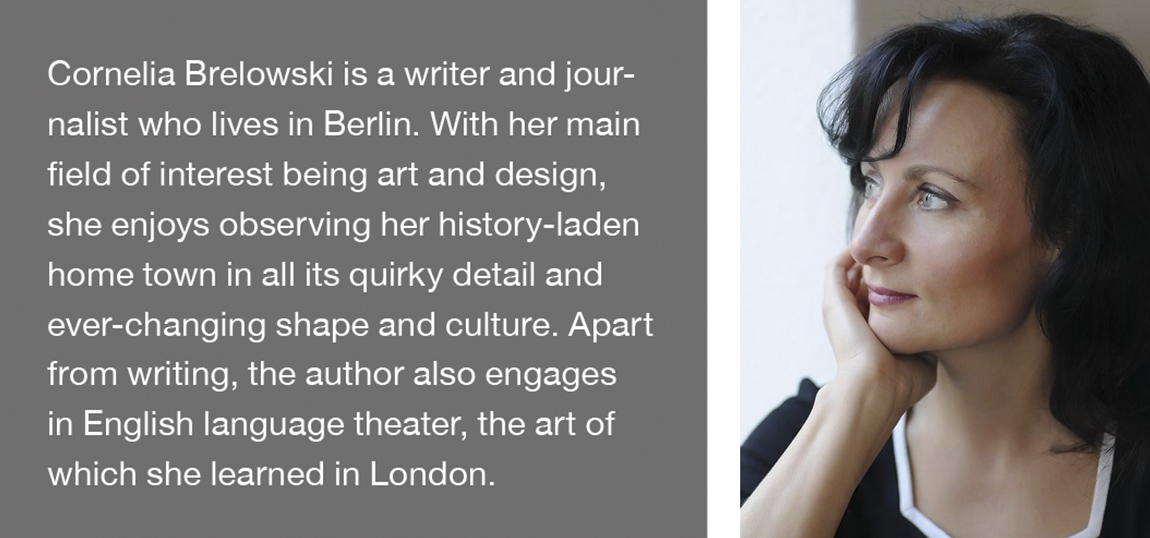Cornelia Brelowski: Castle Gold
TEXT: CORNELIA BRELOWSKI

Schloss Schönhausen, Berlin Pankow. Photo: A. Savin, Wikipedia
Do you like castles? In case you find yourself in need of cultural input with a nice aside of splendid park design – and you don’t have the time to go all the way to Potsdam – Schloss Schönhausen might be just the right thing.
By way of explanation: Potsdam’s famed Sanssouci project, a beautifully laid out composition of castle architecture and garden design was originally started by Frederik the Great (“Alter Fritz” to the devoted Berliner), while Schloss Schönhausen was the domain of his wife Queen Christine Elisabeth.
Inside, you will find accommodating staff and clean facilities as well as one of the nicest small museum shops in Berlin. If inclined to take a tour through the carefully restored interiors, you will not only find out about Queen Christine Elisabeth’s significant influence on the surrounding communities but also about the role the location played during GDR times. After 1945, just like the city itself, Elisabeth’s gardens were divided in two. The considerably smaller yet most beautiful part around the castle became GDR president Wilhelm Pieck’s official residence and was overhauled into what was then deemed a ‘Modern Garden’. Leaning much on pre-war design with its classical modernist and Bauhaus influences, the new additions by Reinhold Linger favoured clear-cut layouts and a reduced formal language, forming a representative, modern frame for official receptions. The stylish guest rooms on the upper floor meanwhile were used by high- ranking GDR visitors, such as the late Russian president Mikhail Gorbachev (“Gorbi” to the devoted Berliner) and his wife Raissa.
The route to this inspiring location of Berlin history can be taken either from the city centre of Berlin-Pankow, or via the Mauerweg (Berlin Wall path) if you leave it by turning right into Bürgerpark and crossing over to Parkstrasse – a lush, tree-lined street with garden villas stretching between Bürgerpark and Schlosspark Schönhausen. At the end of Parkstrasse, turn left and you will soon see the gatehouses.
Once you arrive at the castle, one of the most important side perks of the gardens are the immense sycamore trees, placed in a group behind the castle and at 190+ years now listed as natural monuments. The oldest and largest tree guards the castle to the right and since 2022 is also sheltering a returned female resident of Schönhausen again: ‘Resting woman’ by Fritz Hut is a 1920s bronze sculpture formerly looted by the Nazi regime. It was found on a military waste site and had initially been given to the National Gallery. Once the provenience was clear, it was passed on to the foundation Fürstenberg-Beaumesnil (Hans Jean Fürstenberg having been identified as the original owner), and finally allowed to return to the castle gardens. The sculpture’s history truly reads like a thriller, and it is a pleasure to see it safely returned to its original home. To the other side of the building, a lotus pool forms part of a sunken garden which, together with the tea house at the other end of the park, rounds up the modern design by Reinhold Linger. Hungry from all the fresh air and input? Café ‘Sommerlust’ at the park entrance by Tschaikowskistrasse provides coffee and the yummiest vegan ice cream Berlin has to offer.

Photo: Coline Mattée
Subscribe to Our Newsletter
Receive our monthly newsletter by email





